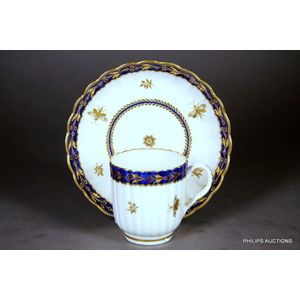Crackle Glaze Kiwi Trio by Royal Doulton (7 words)
You must be a subscriber, and be logged in to view price and dealer details.
Subscribe Now to view actual auction price for this item
When you subscribe, you have the option of setting the currency in which to display prices to $Au, $US, $NZ or Stg.
- Crackles / Cracquelure - In ceramics, crackles may be introduced intentionally during the firing process, as was often the case with Oriental ceramics, and are known as artificial crackles. Natural crackles occur with age, and if the glaze is transparent, may be difficult to detect. Natural crackles may not cover the whole surface of the object and may be uneven in size.
- Crackling and Crackle as a Decorative Technique - Crackle, also known as crackling, is a decorative technique that has been used in China for centuries. It is believed to have originated during the Song Dynasty (960?1279 AD) and was primarily used in the production of ceramics, lacquerware, and furniture. The crackling effect was achieved by applying a glaze or lacquer that was formulated to crack during firing, creating a crackled pattern on the surface of the item.
During the Ming Dynasty (1368?1644 AD), crackle became a highly sought-after decorative technique, and it was used to create intricate and beautiful designs on ceramics and lacquer ware.
In Western decorative arts, crackle / crackling came into use during the Art Nouveau movement in the late 19th and early 20th century. The crackling effect was used to create a sense of movement and fluidity in the design of Art Nouveau pieces.
It was also used in the 1920s and 1930s during the Art Deco movement.
This item has been included into following indexes:
- Royal Doulton (England), item types
Visually similar items

A Dr Wall Worcester Insect decorated coffee can and saucer, later 18th century, the fluted can and saucer with gilt berry and leaf decorated cobalt borders, the bodies with gilt insects and sprigs, a wreath to the saucer; blue crescent mark underside to bo

Pair of diamond earrings and ring, each double hoop pave-set with brilliant-cut diamonds, the centre highlighted with channel-set baguette diamonds, with ring en suite, the diamonds together weighing approximately 9.14 carats, mounted in 18ct gold, ring si

18ct gold, diamond and chrysoberyl ring, Van Cleef & Arpels, of bombe form, the centre pave-set with brilliant-cut diamonds between a ropetwist border flanked by tapered chrysoberyl plaques, size H1/2, signed Van Cleef & Arpels, numbered C 5001 C9

A Derby coffee can and saucer, circa 1770-1782 period, pattern 55, the fluted can and saucer with dentil bordered rims, and gilt bands of circle patterns and trailing vines; painted puce mark underside to both, height 7 cm, (cup) diameter 13.5 cm, (saucer)
